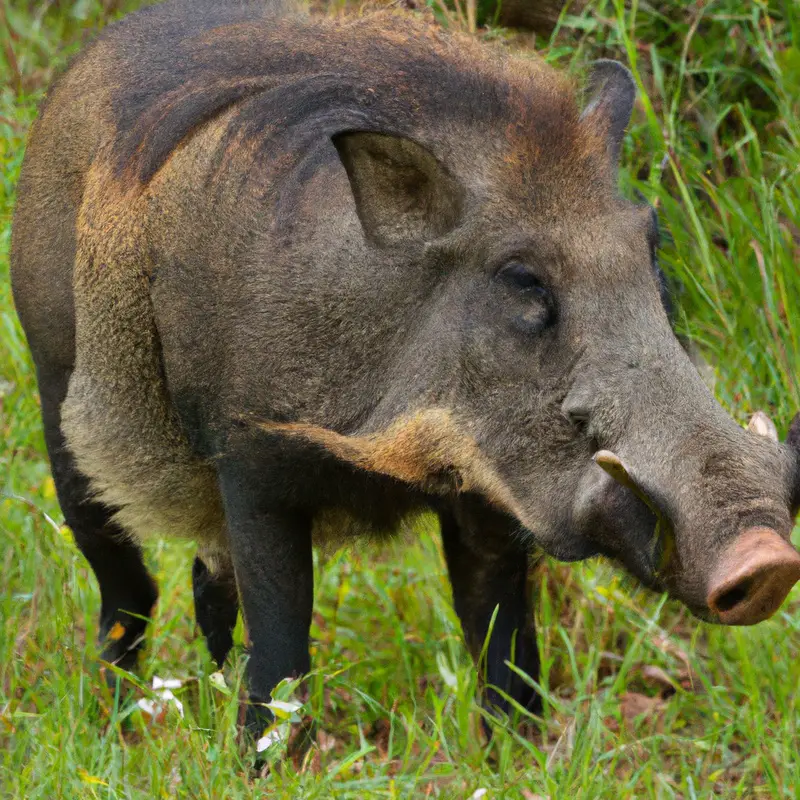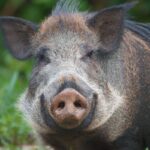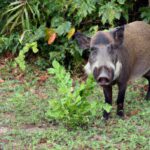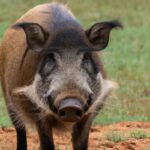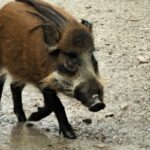Key Takeaways:
- Feral hog populations in Arizona are increasing rapidly, posing a significant threat to ecosystems and agriculture.
- Hunting feral hogs in Arizona requires a specific permit, as they are considered an invasive species.
- Efforts to control feral hog populations in Arizona focus on a combination of hunting, trapping, and reproductive control.
- Hunters play a vital role in managing feral hog populations by participating in organized hunting events and reporting sightings to authorities.
Imagine the thrill of being deep in the Arizona wilderness, tracking down a formidable and elusive creature – the feral hog. As an experienced hunter in Arizona, I’ve seen firsthand the impact these resilient animals have had on the ecosystem.
In this blog, I’ll share my expertise on hunting feral hogs in Arizona, from identifying their signs to understanding the best equipment and strategies.
We’ll also delve into hunting regulations, safety considerations, and even the delicious rewards of field dressing and processing feral hog meat. Get ready for an exhilarating hunt like no other!
Hunting Method | Pros | Cons |
Spot and Stalk | – Opportunity to cover a large hunting area – Requires less equipment – Allows for a stalking approach | – Requires good visibility for spotting hogs – Can be physically demanding |
Using Hunting Dogs | – Dogs can track and locate hogs more effectively – Adds excitement and adrenaline to the hunt – Higher success rate in finding hogs | – Requires trained hunting dogs – Need to be familiar with dog handling techniques |
Using Bait and Feeders | – Allows for easy hog attraction – Increases success rate – Can hunt from a blind | – Requires permission to set up bait and feeders – Attracts other wildlife |
Calling | – Can attract hogs from a distance – Can be done from a stationary position | – Requires knowledge of hog vocalizations – May need to wait for hogs to respond to the call |
Trapping | – Can capture multiple hogs at once – Less physically demanding – Effective for removing hogs from an area | – Requires knowledge and setup of effective traps – May take time for hogs to enter the trap |
Hunting Feral Hog in Arizona
Hunting Feral Hog in Arizona
- Feral hogs, also known as “wild boar” or “wild pigs,” can be found in various regions of Arizona.
- Hunters need to obtain a valid hunting license and adhere to the specific regulations set by the Arizona Game and Fish Department.
- It is crucial to scout the hunting area beforehand to locate hog populations and establish a safe hunting strategy.
- Firearms are the primary means of hunting feral hogs in Arizona, and shotguns or rifles are commonly used.
- Choosing the right firearm and ammunition combination is essential, as hogs are tough animals to bring down.
- It is recommended to hunt feral hogs during early morning or late evening hours when they are most active.
- Hunting methods such as spot and stalk, stand hunting, or using dogs can all be effective in pursuing feral hogs in Arizona.
- Hunters must ensure they have the necessary equipment, including appropriate clothing, hunting gear, and a reliable means of transportation.
- Safety is paramount, so it is crucial to adhere to firearm safety rules and practice ethical hunting techniques.
- Once a feral hog is harvested, it is important to properly field dress and handle the carcass to ensure food safety and prevent the spread of diseases.

Final Verdict
Hunting feral hogs in Arizona can be an exhilarating and rewarding experience for hunters. With the right knowledge and equipment, hunters can identify signs of feral hog presence, navigate hunting regulations, and employ effective hunting techniques.
It is important to prioritize safety during the hunting process and properly handle and process feral hog meat.
Through responsible hunting practices and conservation efforts, we can mitigate the negative impacts of feral hogs in Arizona. So gear up, be prepared, and embark on an exciting adventure to help preserve the natural balance in Arizona’s ecosystems.
